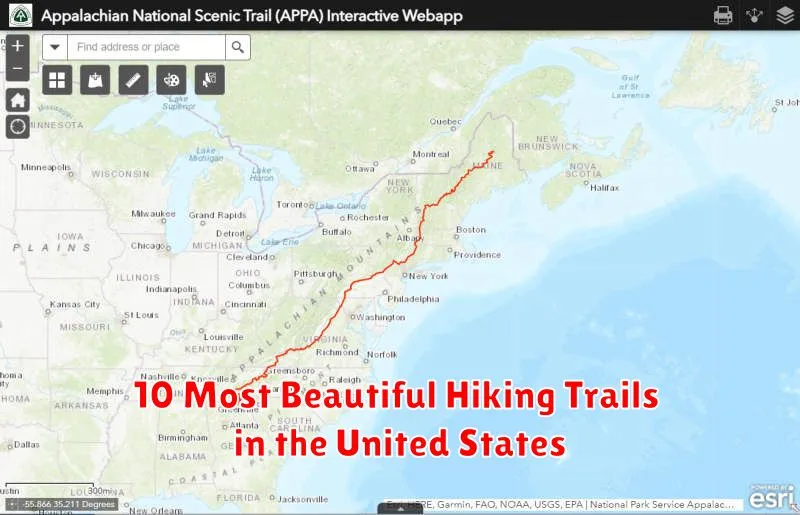Embark on an unforgettable journey through the United States’ breathtaking landscapes with our guide to the 10 Most Beautiful Hiking Trails. From majestic mountain peaks to serene coastal paths, this curated list showcases the most beautiful hiking trails the country has to offer. Whether you’re a seasoned hiker seeking a challenging adventure or a nature enthusiast looking for a peaceful escape, these hiking trails promise awe-inspiring views and unforgettable experiences. Discover the diverse beauty of America’s natural wonders and find the perfect trail to ignite your wanderlust. Explore iconic national parks, traverse stunning canyons, and immerse yourself in the tranquility of ancient forests.
Prepare to be captivated by the sheer beauty and diversity of these hiking trails. Each trail offers a unique glimpse into the natural wonders of the United States, from the rugged terrain of the West to the lush greenery of the East. Whether you’re searching for a challenging trek or a leisurely stroll, our list of the 10 Most Beautiful Hiking Trails in the United States will inspire your next outdoor adventure. Discover the best hiking trails for breathtaking scenery, abundant wildlife, and unforgettable memories. Begin planning your exploration of these remarkable natural landscapes and prepare to be amazed by the beauty that awaits.
Appalachian Trail, Eastern USA
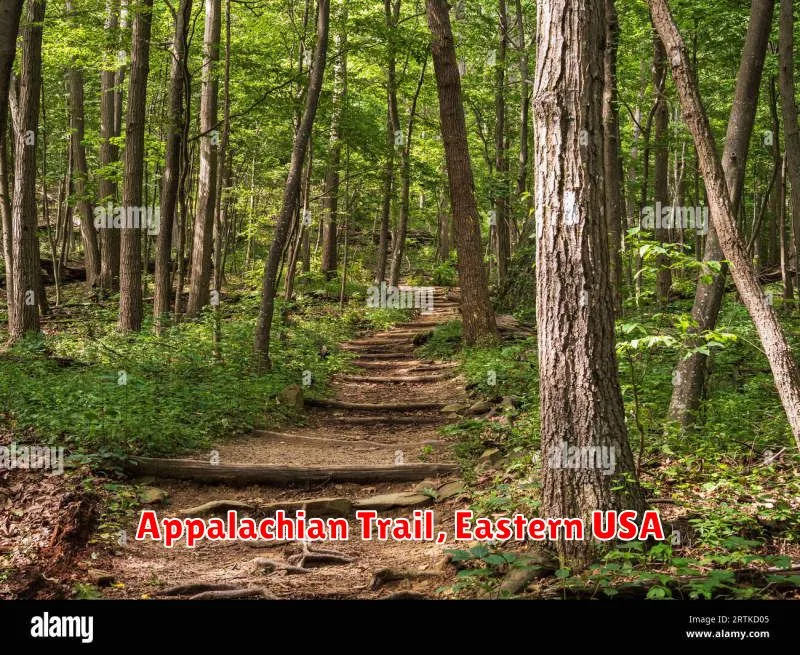
The Appalachian Trail is a renowned hiking trail spanning approximately 2,200 miles from Springer Mountain in Georgia to Mount Katahdin in Maine. Traversing 14 states, this iconic trail offers hikers an immersive experience in the diverse landscapes of the eastern United States.
Known for its challenging terrain, the Appalachian Trail presents hikers with steep climbs, rocky paths, and unpredictable weather. However, the rewarding views and the sense of accomplishment upon completion make it a highly sought-after adventure.
Hikers can experience a wide variety of flora and fauna along the trail, from lush forests and cascading waterfalls to breathtaking mountain vistas. Whether thru-hiking the entire length or enjoying a shorter section, the Appalachian Trail offers a unique and unforgettable journey into nature’s beauty.
John Muir Trail, California
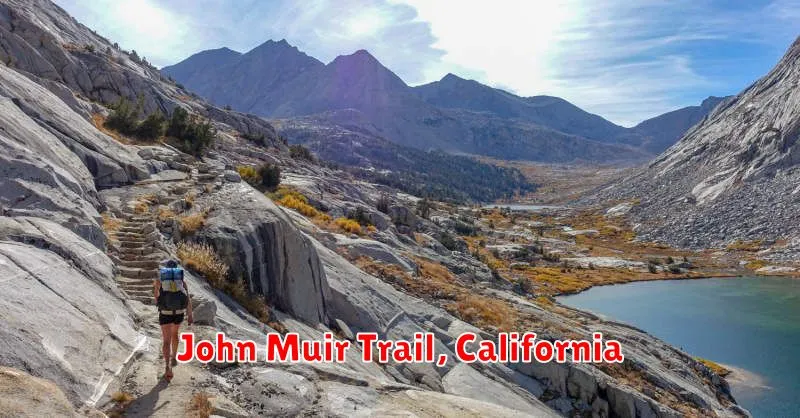
The John Muir Trail (JMT), a 211-mile backpacking trail located in the Sierra Nevada mountain range of California, is a true wilderness experience. It passes through Yosemite, Kings Canyon, and Sequoia National Parks, showcasing some of the most spectacular scenery in the United States.
Hikers on the JMT can expect to encounter granite peaks, alpine lakes, and lush meadows. Elevations along the trail range from 4,000 to over 14,000 feet, demanding a high level of physical fitness. Permits are required, and the entire trail typically takes three weeks to complete.
The JMT is considered strenuous due to its length, elevation gain, and remote location. Preparation and proper gear are essential for a safe and enjoyable trek.
Kalalau Trail, Hawaii
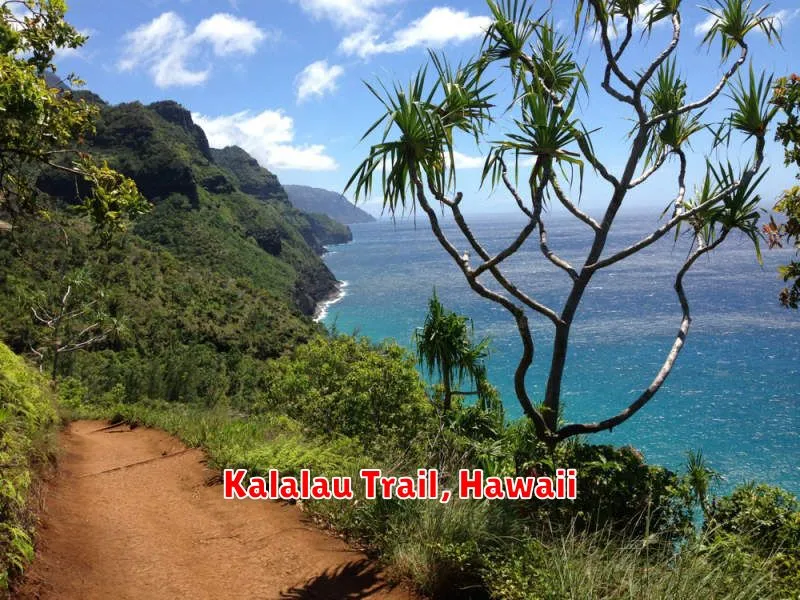
Located on the island of Kauai, the Kalalau Trail is renowned for its dramatic scenery. This 11-mile trek traverses the rugged Na Pali Coast, showcasing towering cliffs, cascading waterfalls, and lush valleys.
The trail is challenging, with steep inclines and narrow sections. Hikers should be prepared for varied weather conditions and be in good physical shape. The endpoint rewards hikers with access to the secluded Kalalau Beach, a truly breathtaking destination.
Permits are required for all hikers, including those camping overnight. Proper planning and preparation are essential for a safe and enjoyable experience on the Kalalau Trail.
Angels Landing, Utah
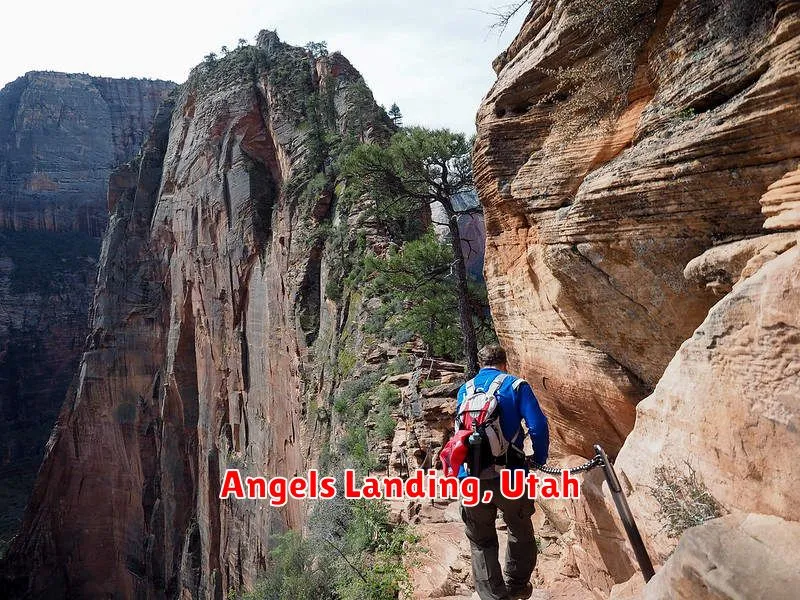
Located in Zion National Park, Angels Landing is a strenuous but rewarding 5.4-mile hike. The trail ascends 1,488 feet to a breathtaking viewpoint overlooking Zion Canyon.
The final section of the hike involves traversing a narrow spine with sheer drop-offs, requiring hikers to hold onto chains bolted into the rock. This thrilling aspect contributes to the trail’s popularity and its name, evoking a sense of ethereal beauty and a touch of danger.
Hikers need a permit to access Angels Landing, obtainable through a lottery system. Due to its popularity and the challenging nature of the terrain, it’s essential to be prepared with appropriate footwear, water, and sun protection.
The Narrows, Zion National Park
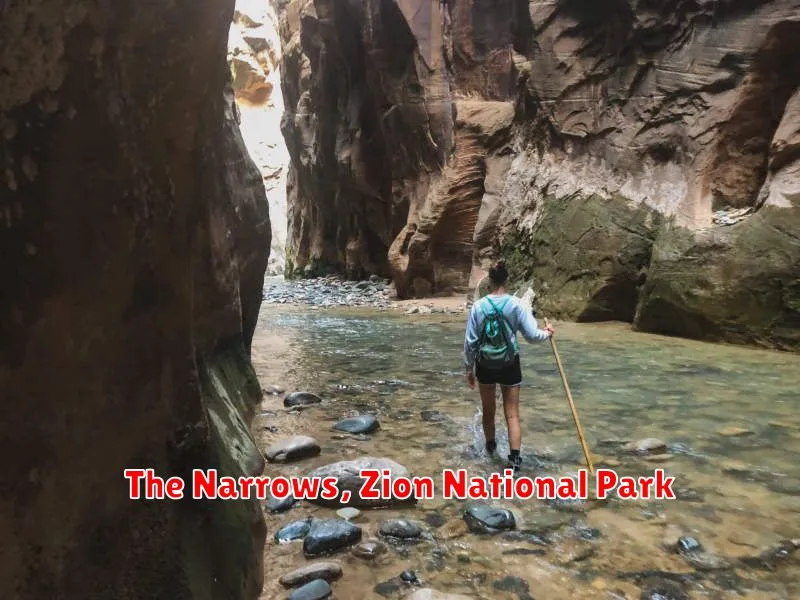
Located in Zion National Park, Utah, The Narrows offers a unique hiking experience. The trail follows the Virgin River as it winds through a slot canyon, with towering sandstone walls hundreds of feet high.
Hikers wade through the river, often up to their waist (or even chest in deeper sections), making this a truly immersive adventure. The cool water and breathtaking scenery create an unforgettable experience. Water shoes with good grip and a walking stick are highly recommended.
Permit reservations may be required depending on the time of year and desired route. Check the park’s website for current regulations and conditions before planning your hike.
Half Dome, Yosemite National Park
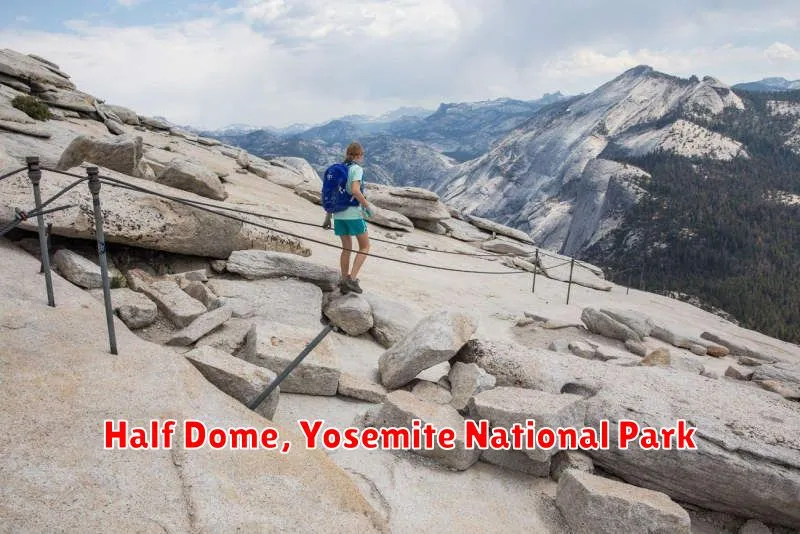
Rising nearly 5,000 feet above Yosemite Valley, Half Dome is a granite monolith and iconic symbol of Yosemite National Park. The challenging 14-16 mile hike to the summit is not for the faint of heart, typically taking 10-12 hours to complete.
The final ascent to the summit involves climbing up a steep section of rock face with the aid of cables. Permits are required to hike Half Dome via the cable route. This strenuous climb offers breathtaking panoramic views of Yosemite Valley and the High Sierra.
Grand Teton Trail, Wyoming
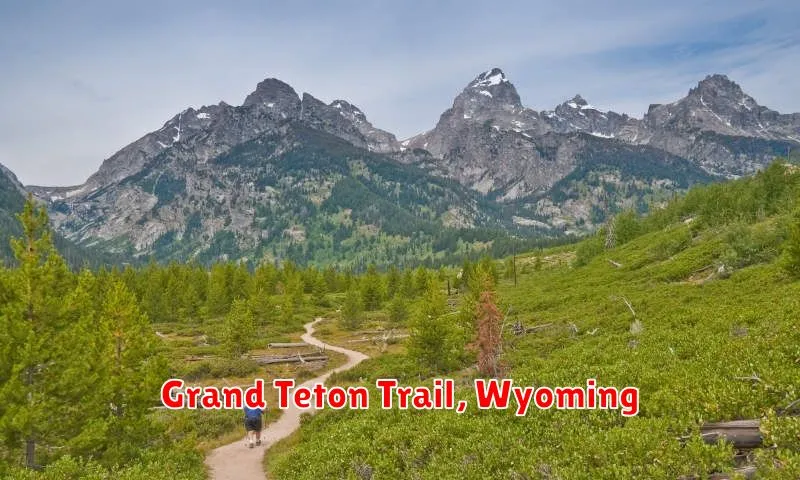
The Grand Teton Trail offers a challenging but rewarding trek through the heart of Grand Teton National Park. This roughly 40-mile trail provides unparalleled views of the Teton Range, alpine lakes, and diverse wildlife.
Hikers should be prepared for strenuous climbs and varying weather conditions. Backcountry camping permits are required for overnight trips. The trail typically takes 2-4 days to complete.
Key Features:
- Spectacular mountain scenery
- Opportunities for wildlife viewing
- Challenging terrain
- Backcountry camping
Lost Coast Trail, California
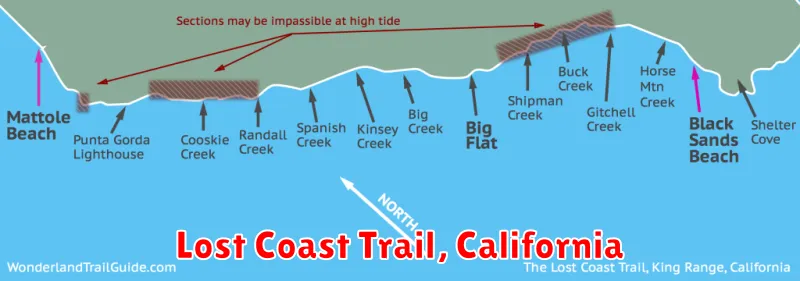
The Lost Coast Trail in Northern California offers a truly unique hiking experience. Characterized by its remote location and dramatic coastal scenery, the trail traverses a section of coastline largely untouched by development.
Hikers can choose between a north and south section, each offering distinct challenges and rewards. The King Range, with its steep climbs and descents, dominates the southern portion. The northern section, characterized by long stretches of beach walking, requires careful tide planning.
Permits are required for overnight trips and can be difficult to obtain due to the trail’s popularity. Be prepared for challenging terrain, variable weather conditions, and limited access to resources.
Wildlife viewing opportunities abound, with chances to spot seals, sea lions, whales, and a variety of shorebirds.
Skyline Trail, Washington
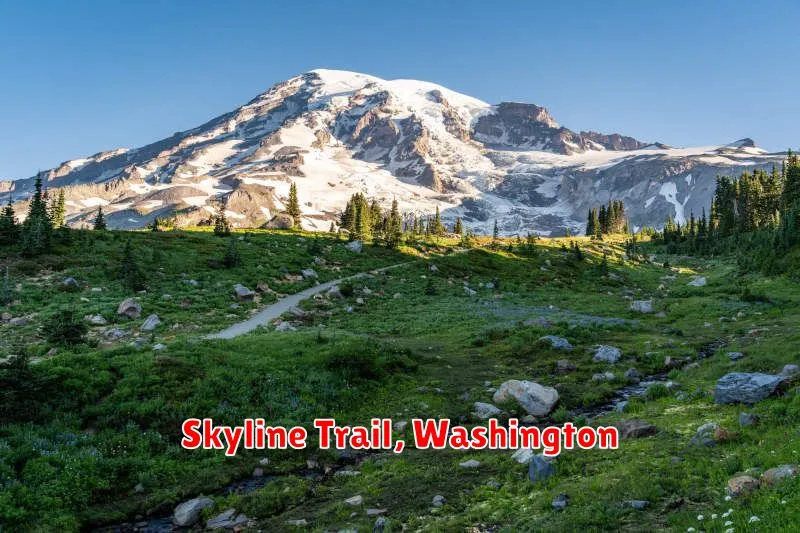
Located in Mount Rainier National Park, the Skyline Trail offers breathtaking panoramic views. This 5.5-mile loop is considered moderately challenging, gaining approximately 1,700 feet in elevation.
Hikers are rewarded with stunning views of Mount Rainier, wildflowers in vibrant hues during peak season (typically July/August), and diverse landscapes, including meadows and forests.
Key Information:
- Distance: 5.5 miles
- Elevation Gain: 1,700 feet
- Difficulty: Moderate
- Best Time to Visit: July – August
Mount Washington Trail, New Hampshire
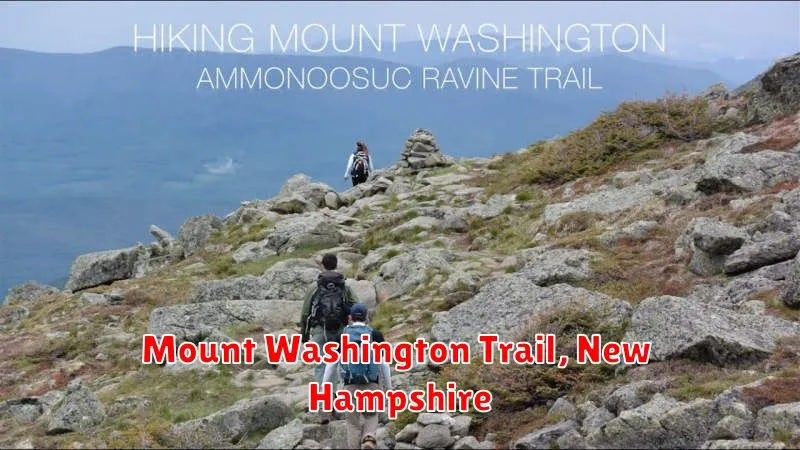
Located in the heart of the White Mountains, the Mount Washington Trail offers a challenging but rewarding hike to the summit of the highest peak in the Northeast. The trail is known for its dramatic changes in weather, so hikers must be prepared for all conditions.
Several trails lead to the summit, including the popular Tuckerman Ravine Trail and the Lion Head Trail. These trails offer stunning views of the surrounding mountains and valleys. Hikers can also opt for the Mount Washington Auto Road for a less strenuous ascent.
Reaching the summit of Mount Washington provides panoramic views that stretch for miles. On a clear day, hikers can see into Canada and even the Atlantic Ocean. The historic Mount Washington Observatory, located at the summit, offers insights into the mountain’s unique weather patterns.

